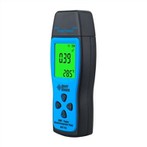How to Use a Multimeter for Circuit Detection
The multimeter has a buzzing mode, which means using two probes to measure the same wire. If there is a short circuit, there will be no response. If there is a circuit, there will be a buzzing sound. Sometimes, when the device itself is not well grounded and the shell is live, the red probe of the multimeter can be placed on the shell and the black mark can be directly in contact with the ground to measure the strength of the shell leakage current. In the remaining work, it can also be connected in series to the circuit to measure AC and DC currents.
To check for electrical leakage in the circuit, a megohmmeter (shaker) should be used because the multimeter voltage is lower (9V) and the megohmmeter voltage is higher (500V). As the working voltage of the circuit is 220V, it is difficult to diagnose circuits with unclear electrical leakage. To check the leakage of a circuit with a digital meter, the power supply needs to be cut off first. After discharging the circuit, measure it with resistance mode and 2M mode. The normal display is 1 (infinite).
Measure whether the circuit is in a connected state by using a multimeter in the ohm range. When measuring, choose the range where the meter pointer is close to deflection of 0 ohms. If the circuit is in a circuit, connect one end (A end) of the circuit to the 100 ohm range of a multimeter (red probe), and connect the black probe to the other end (B end) of the circuit to be measured. If the measured result is zero, it means that the circuit is connected, also known as a path. Only a path allows current to pass through the circuit; If the multimeter ohm range pointer at the A to B end of the line does not approach zero ohms, then the line is already in an open circuit state, and disconnection is called a circuit break or an open circuit.






